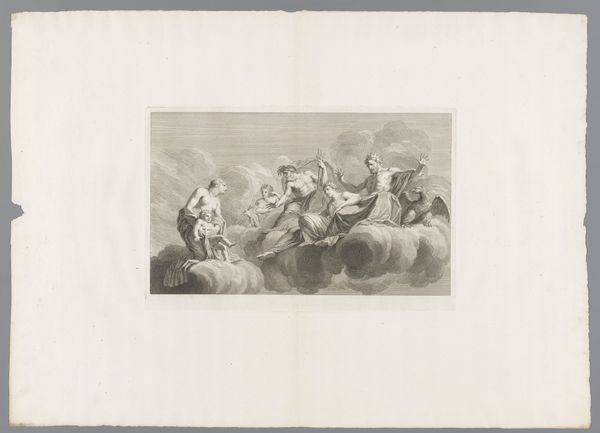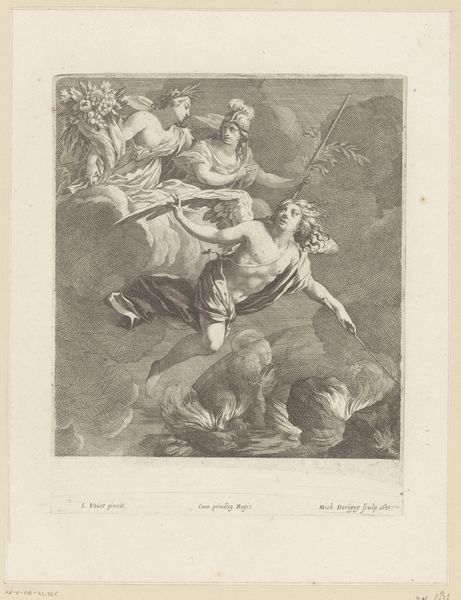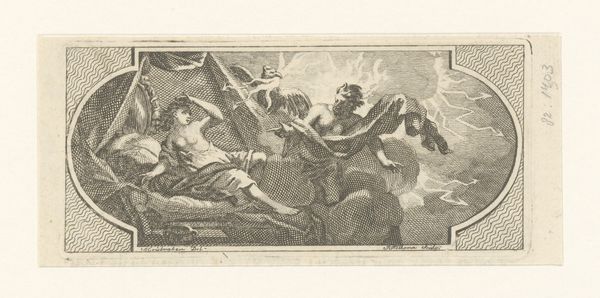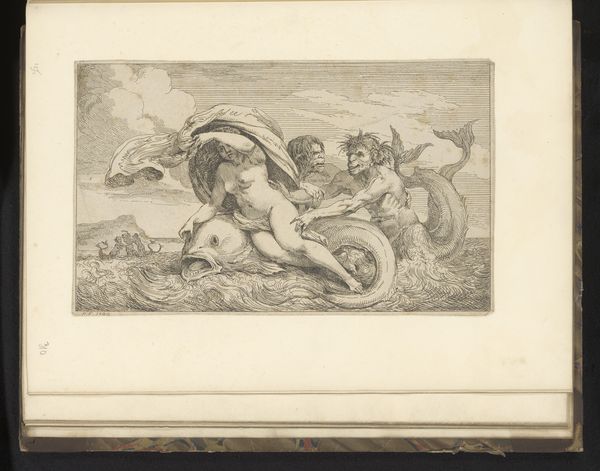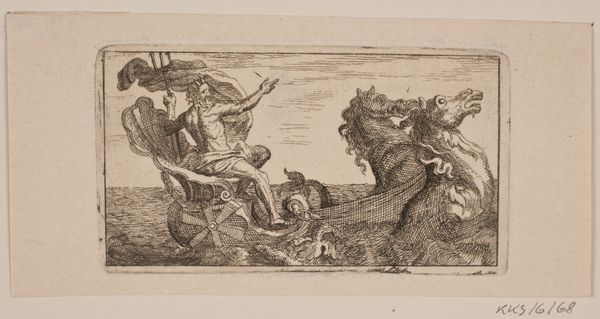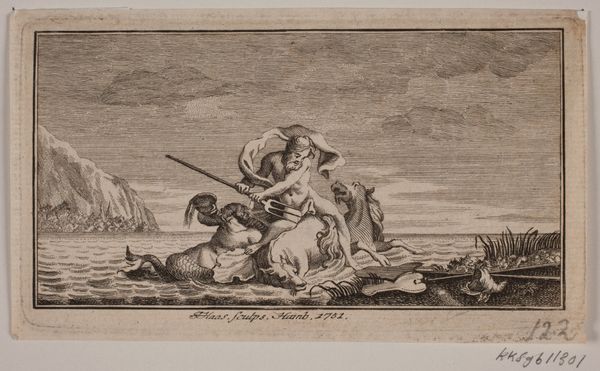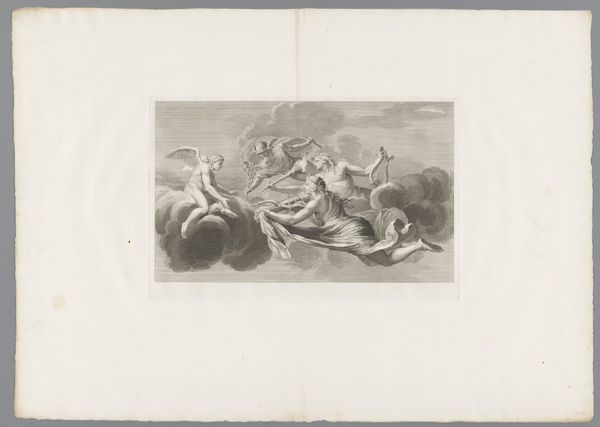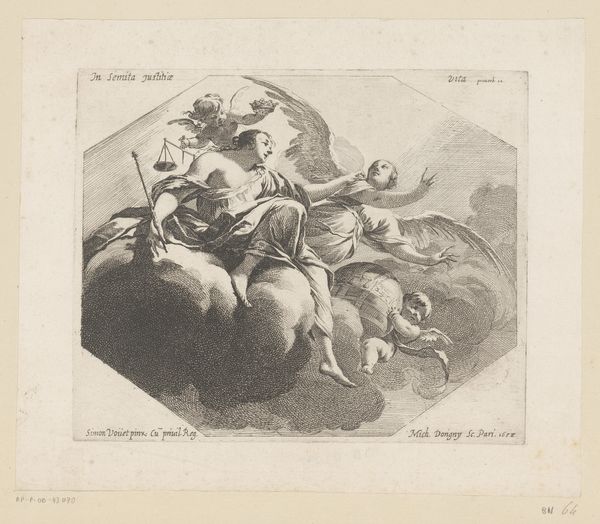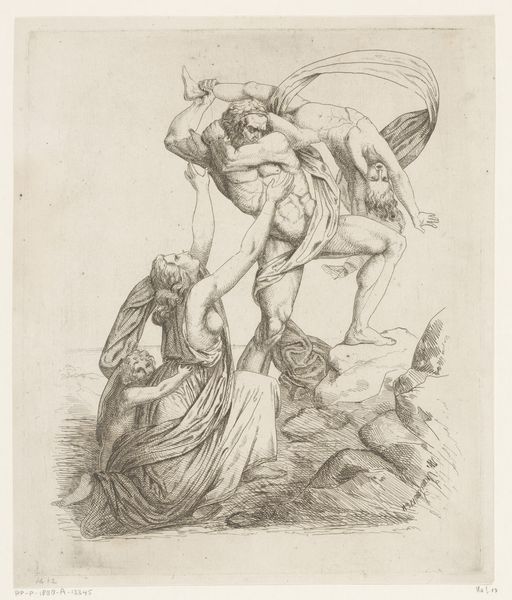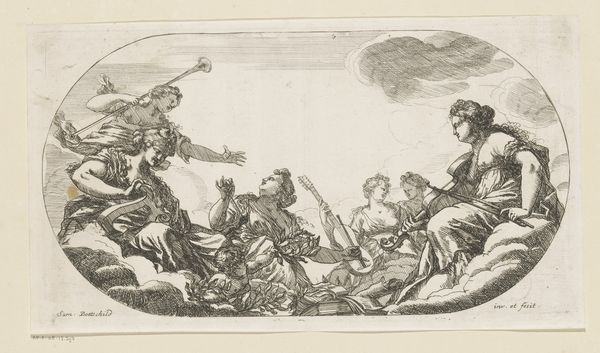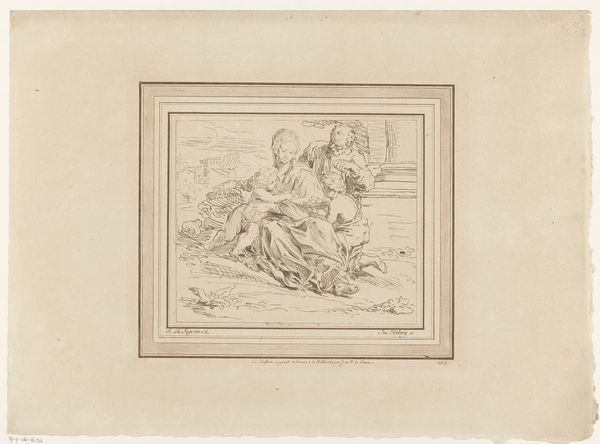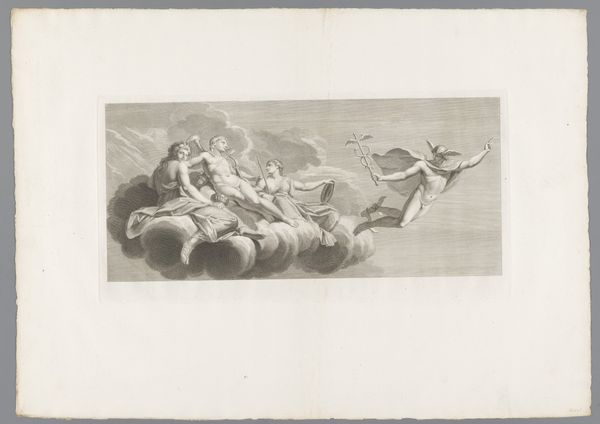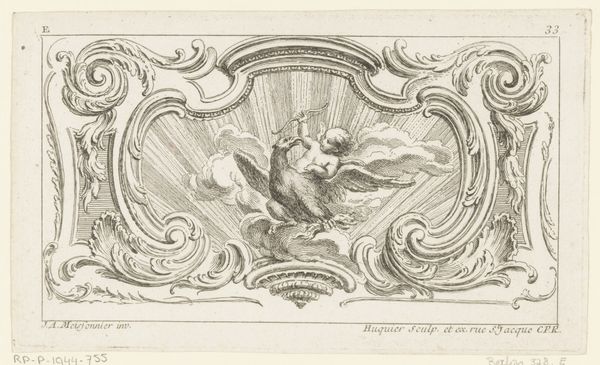
drawing, print, etching, engraving
#
drawing
#
neoclacissism
#
allegory
# print
#
etching
#
landscape
#
etching
#
figuration
#
history-painting
#
nude
#
engraving
Dimensions: Plate: 8 15/16 × 12 11/16 in. (22.7 × 32.2 cm) Sheet: 9 11/16 × 13 3/8 in. (24.6 × 34 cm)
Copyright: Public Domain
Editor: This etching, "Acis and Galathea" by Francesco Bartolozzi, from 1787, has a really dreamlike quality. The figures seem to float across the sea. What do you see in this piece, and how might we understand it through a contemporary lens? Curator: It's fascinating how Bartolozzi uses the mythological tale of Acis and Galatea. It presents us with a lens through which to consider power dynamics, gender, and even ecological concerns. Think about Galatea, a sea nymph, and her lover Acis, pursued by the monstrous Polyphemus. It raises the questions: Who has the right to possess, to desire, and to destroy? What kind of narrative does the exclusive depiction of beauty and privilege, devoid of its socio-economic and historical contexts, reinforce? Editor: So you are suggesting the classical narratives of love, beauty, and divinity that we often see may hide some potentially uncomfortable politics of privilege? Curator: Exactly. In the original myth, Acis is murdered out of jealousy, transformed into a river, suggesting themes of violence against men. The idyllic scene also belies a tension present within class structures and unequal access to the spaces presented, then and now. What stories do we tell and whose perspectives are privileged and silenced? Considering such issues can help to unpack historical dynamics of oppression. Editor: That's a perspective I hadn't considered before. Seeing this idyllic scene as a site of social commentary and questioning really challenges my initial interpretation. Curator: It is about engaging with the artwork as part of a wider discourse, connecting what it meant then, and what it could signify now, given current discourses. Recognizing it will never be an exhaustive understanding of all intersections. Editor: It has given me much food for thought on classical narratives and their complicated meanings. Thank you.
Comments
No comments
Be the first to comment and join the conversation on the ultimate creative platform.
